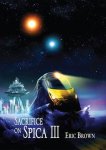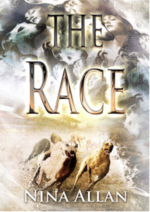 Despite being shortlisted twice for the Booker Prize, David Mitchell’s novels are not like most other literary fiction novels for two reasons: first, characters from one book often appear in other books; and secondly, many of his novels feature genre tropes and situations. In his debut, Ghostwritten (1999), one of the narrators proves to be a disembodied spirit who can move from body. Cloud Atlas (2004), has two of its six sections set in the future: one a near-future dystopian Korea, the other a post-apocalyptic Hawaii. While it’s not unusual for literary fiction authors to visit genre shores, Mitchell has shown a greater appreciation of, and a better facility with, gene tropes than most of his peers. But then he is a fan and has publicly said as much. And in The Bone Clocks, and its pendant novel, Slade House, he has for the first time told an actual genre story, albeit in the language of literary fiction.
Despite being shortlisted twice for the Booker Prize, David Mitchell’s novels are not like most other literary fiction novels for two reasons: first, characters from one book often appear in other books; and secondly, many of his novels feature genre tropes and situations. In his debut, Ghostwritten (1999), one of the narrators proves to be a disembodied spirit who can move from body. Cloud Atlas (2004), has two of its six sections set in the future: one a near-future dystopian Korea, the other a post-apocalyptic Hawaii. While it’s not unusual for literary fiction authors to visit genre shores, Mitchell has shown a greater appreciation of, and a better facility with, gene tropes than most of his peers. But then he is a fan and has publicly said as much. And in The Bone Clocks, and its pendant novel, Slade House, he has for the first time told an actual genre story, albeit in the language of literary fiction.
The Bone Clocks is structured as six novellas, most of which are told from the point of view of Holly Sykes. The novel opens in 1984, Holly is a teenager, grief-stricken at the recent death of her younger brother. She decides to run away from home, and makes it halfway across Kent before running afoul of the story’s villains. These villains harken back to earlier novels by Mitchell, particularly The Thousand Autumns of Jacob de Zoet (2010). That novel introduced the idea of secret immortals amongst us, and it is a war between two such groups which forms the backbone of The Bone Clocks. (You wait for a novel about secret immortals, and three come along at once: as well as The Bone Clocks, 2014 also saw the publication of Claire North’s The First Fifteen Lives of Harry August, while Kate Atkinson’s Life After Life appeared in 2013.) The Horologists are body-hopping serial reincarnators. Their enemies, however, the Anchorites of the Chapel of the Dusk of the Blind Cathar, “decant” souls in order to extend their lives. The process is fatal to the decanted souls. Over the course of The Bone Clocks Holly has a number of run-ins with the Anchorites, beginning with that trip across Kent as a fifteen-year-old, and finishing in a post-Crash Ireland in 2043.
Unlike Cloud Atlas, the six sections of The Bone Clocks are not nested, but follow on chronologically one from the other. Like that earlier novel, however, they also display an excellent control of voice. The Bone Clocks is Holly Sykes’s story and she’s an engaging and convincing character. Having said that, the Anchorites are a bit pantomime, enfant terrible literateur Crispin Hershey initially reads too much like a pastiche of a well-known UK author but soon rounds out, and the immortal Marinus never quite convinces. But these are minor gripes. The Bone Clocks handles its settings with impressive assurance and, more than any other of Mitchell’s novels, this is an insightful book.
Mitchell has said he intended each section of the novel to be a different genre – such as, 1980s social realism, war reportage, fantasy and dystopia, among others. It’s a given most of the really interesting genre fiction is being written in the area where genres meet, and Mitchell makes good use of the interfaces – the sudden irruption of fantasy into Holly’s adventures in Thatcherite Britain creates a shockingly effective introduction of The Bone Clocks’ underlying fantastical plot. In fact, those sections featuring this violent introduction of genre into literary fiction actually work better than those sections which are pure genre. Perhaps it’s a consequence of expectation; perhaps it’s simply the stark contrast between the two modes.
 Slade House, on the other hand, makes no secret of its melding of genre and non-genre, although it tries to wrongfoot the reader by presenting its genre elements as “dream-like”. If the novel were a film or television series, it would be called a “spin-off”. Less than half the size of The Bone Clocks, Slade House echoes that novel’s multi-part structure – each set at nine-year intervals from 1979 to 2015 – but takes place entirely in and around the eponymous residence. Each section is told from the point of view of a different person. The eponymous house is home to Norah and Jonah Grayer who, while not associated with The Bone Clocks’ Anchorites, have been using a similar method to extend their lives. Slade House’s narrators are the pairs’ victims.
Slade House, on the other hand, makes no secret of its melding of genre and non-genre, although it tries to wrongfoot the reader by presenting its genre elements as “dream-like”. If the novel were a film or television series, it would be called a “spin-off”. Less than half the size of The Bone Clocks, Slade House echoes that novel’s multi-part structure – each set at nine-year intervals from 1979 to 2015 – but takes place entirely in and around the eponymous residence. Each section is told from the point of view of a different person. The eponymous house is home to Norah and Jonah Grayer who, while not associated with The Bone Clocks’ Anchorites, have been using a similar method to extend their lives. Slade House’s narrators are the pairs’ victims.
In each section, the narrator investigates Slade Alley (for a variety of reasons), discovers a small iron door – an interdimensional “Aperture” – which gives entry to Slade House’s grounds, is initially taken in by the illusion woven by the Grayer twins… and is then consumed by them. This act is usually presaged by the sight of a portrait of the narrator at the end of a line of portraits on the main staircase – which is, to be honest, a somewhat cheesy horror film cliché. Slade House presents enough detail to invoke the year in which each section is set, but given that Slade House itself is timeless, this makes for an odd disconnect, often making the detail feel superfluous. Nor is it helped by the last but one section – 2006 – consisting chiefly of a history lesson of Norah and Jonah Grayer, and an explanation of the workings of the house and its grounds. It comes as no surprise to learn that the final section, set in 2015, is about the defeat of the Grayer twins – after the explanation, where else could the narrative go?
Fans of Mitchell’s fiction will have fun spotting characters from other of his novels, a number of which make an appearance in Slade House (as indeed do several in The Bone Clocks). I’ve yet to be convinced this actually adds value, given that the “shared universe” in which all of Mitchell’s novels are set is not a shared universe as the term is understood in genre fiction, but a much less rigorous use of the technique. In other words, they feel more like “Easter eggs” than a structural part of each book’s universe.
Unlike some genre fans, I have no problem with literary fiction authors “dabbling” (not my choice of word) in science fiction and fantasy. On the contrary, the more the merrier – and the lack of knowledge of genre traditions and history can actually prove an advantage to a writer. True, the results often feel a little old-fashioned to veteran readers of genre fiction, and a lack of confidence in deploying genre tropes can lead to unnecessary and clumsy exposition… David Mitchell, however, is a genre fan, he knows what he’s doing. And it shows.
Mitchell also knows what he’s doing when it comes to non-genre fiction. Genre writers make few concessions to their readers – they assume they know how to parse their stories and how genre tropes operate. They also trust their readers to understand the need for exposition. But there’s a limit. Up to this point, the writer needs to explain; and no further. Literary writers usually miscalculate this point and feel a need to explain those things which genre readers either already know about or are happy to take on trust. Likely this is because such writers are not entirely confident with how genre stories and tropes work, and they’re also unsure their readers will understand.
It’s clear Mitchell trusts his readers, both non-genre and genre – evident not only from his oeuvre, but also from his level of success. We need more writers like him. Both inside and outside the genre.
This review originally appeared in Interzone #261, November-December 2015.













